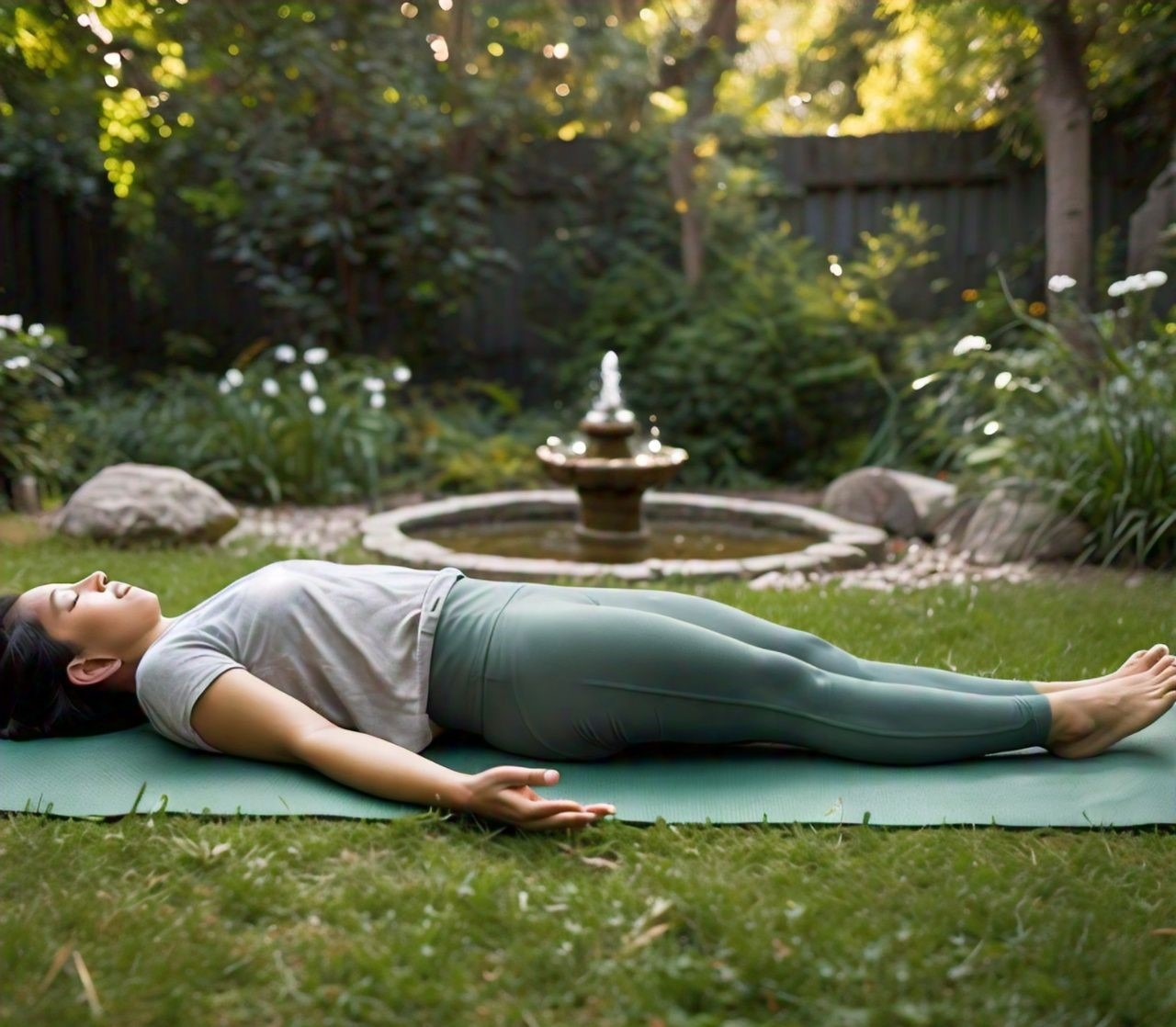Introduction: What are Somatic Exercises?
The body is more than just a vessel; it’s a complex system intertwined with our mental and emotional well-being. As awareness of this connection grows, more people are turning to somatic exercises to enhance their physical and mental health. But what are somatic exercises? These exercises focus on the internal experience of movement, aiming to rewire the brain-body connection for better awareness, control, and overall well-being. In this article, we will explore what somatic exercises are, their benefits, how to practice them effectively, and provide new tips to enhance your practice.
What Are Somatic Exercises?
Definition of Somatic Exercises
So, what are somatic exercises exactly? Somatic exercises are a series of movements that focus on body awareness and control, often performed slowly and mindfully. The term “somatic” is derived from the Greek word “soma,” meaning “body.” These exercises prioritize the internal experience of the body, teaching individuals to sense, feel, and move with greater awareness. Unlike traditional workouts that target muscle strength or cardiovascular fitness, somatic exercises are designed to address the nervous system, leading to improved body-mind integration.
How Somatic Exercises Work
To fully grasp what are somatic exercises, it’s essential to understand how they work. Somatic exercises work by re-educating the brain to create new neural pathways that promote better movement patterns. The exercises involve slow, deliberate movements that are consciously controlled and often repeated. This deliberate practice helps the nervous system learn and integrate new, healthier patterns of movement, leading to reduced pain, tension, and discomfort. By focusing on the internal sensations of the body, individuals can identify areas of habitual tension and release them, promoting relaxation and ease of movement.
Benefits of Somatic Exercises
Physical Benefits
Knowing what are somatic exercises is just the beginning. Understanding the benefits is equally important. Somatic exercises offer numerous physical benefits, making them a valuable addition to any wellness routine:
- Improved Flexibility and Mobility: Somatic exercises help lengthen muscles and improve joint mobility, allowing for greater freedom of movement.
- Reduction in Chronic Pain and Muscle Tension: By releasing habitual tension patterns, these exercises can alleviate chronic pain, particularly in the back, neck, and shoulders.
- Enhanced Body Alignment and Posture: Regular practice of somatic exercises promotes better alignment, reducing the strain on muscles and joints and improving overall posture.
Mental and Emotional Benefits
The benefits of somatic exercises extend beyond the physical realm, offering significant mental and emotional advantages:
- Reduction in Stress and Anxiety: Somatic exercises promote relaxation and reduce stress by calming the nervous system. The slow, mindful movements encourage deep breathing and a sense of calm.
- Improved Mental Clarity and Focus: By enhancing body awareness, somatic exercises help individuals become more present and focused, improving concentration and mental clarity.
- Emotional Release and Better Emotional Regulation: The practice allows individuals to connect with their emotions stored in the body, facilitating emotional release and better regulation of emotions.
Long-term Health Benefits
The long-term health benefits are another key aspect of understanding what are somatic exercises. These exercises contribute to long-term health and well-being:
- Prevention of Injuries: By improving body awareness and movement patterns, somatic exercises reduce the risk of injuries caused by poor posture or overuse.
- Enhanced Physical Well-being: Regular practice promotes overall physical health, helping individuals maintain a healthy weight, strong muscles, and a flexible body.
- Improved Quality of Life: The combined physical, mental, and emotional benefits lead to a better quality of life, increased energy levels, and a more positive outlook.
How to Start Practicing Somatic Exercises
Getting Started with Somatic Exercises
Knowing how to start is crucial for those new to somatic exercises. Here’s how you can get started:
- Find a Quiet Space: Choose a quiet, comfortable space where you can focus on your movements without distractions.
- Start with Basic Movements: Begin with simple somatic movements such as lying on your back and gently arching and flattening your lower back. Focus on the sensations in your body as you move.
- Practice Consistently: Consistency is key to experiencing the benefits of somatic exercises. Aim to practice several times a week, even if only for a few minutes each session.
Recommended Frequency and Duration
To make the most of what are somatic exercises, it’s important to establish a regular practice routine. Beginners should start with short sessions, gradually increasing the duration as they become more comfortable with the movements.
- Frequency: Aim to practice somatic exercises at least 3-4 times per week.
- Duration: Start with 10-15 minutes per session, gradually increasing to 30 minutes or more as you progress.
- Balance: Balance your practice with rest days to allow your body to integrate the changes.
Creating a Somatic Exercise Routine
Incorporating somatic exercises into your daily routine can be easy and enjoyable:
- Morning Routine: Start your day with a few minutes of somatic exercises to wake up your body and mind.
- Work Breaks: Take short breaks during your workday to perform somatic movements, reducing tension and improving focus.
- Evening Relaxation: Wind down in the evening with gentle somatic exercises to release the day’s stress and prepare for a restful sleep.
New Tips on How To Do Somatic Exercises Effectively
Listening to Your Body
An essential tip for those asking what are somatic exercises and how to do them effectively is to listen to your body. Pay attention to the sensations and signals your body is sending, and adjust your movements accordingly. If a movement feels uncomfortable or painful, modify it or stop. The goal is to move with ease and awareness, not to force your body into positions.
Mindfulness Techniques in Somatic Exercises
Understanding what are somatic exercises also involves recognizing the role of mindfulness. Mindfulness is a key component of somatic exercises. By staying present and fully engaged in the moment, you can enhance the effectiveness of your practice. Focus on your breath, notice the sensations in your body, and bring your attention to the movements you are performing. Combining somatic exercises with mindfulness meditation can deepen your practice and provide additional benefits.
Avoiding Common Mistakes
When practicing somatic exercises, it’s important to avoid common mistakes that can hinder progress:
- Over-exertion: Somatic exercises should be gentle and relaxing. Avoid pushing yourself too hard or straining your muscles.
- Rushing Through Movements: Take your time with each movement, focusing on the sensations and the experience. Rushing can reduce the effectiveness of the exercises.
- Neglecting Breathing: Breathing is an essential part of somatic exercises. Focus on deep, relaxed breaths to enhance relaxation and body awareness.
Tools and Props for Enhancing Practice
While somatic exercises can be done with minimal equipment, using tools and props can enhance your practice:
- Yoga Mats: Provide a comfortable surface for performing exercises on the floor.
- Cushions and Pillows: Support your body in different positions, making exercises more comfortable.
- Blankets: Can be used for warmth and comfort, or to support certain positions.
Different Types of Somatic Exercises
Hanna Somatics
To further explore what are somatic exercises, it’s helpful to understand different types. Hanna Somatics is a specific form of somatic exercises developed by Thomas Hanna. It focuses on addressing sensory-motor amnesia, a condition where the brain forgets how to properly control certain muscles, leading to chronic tension and pain. Hanna Somatics involves slow, controlled movements that help retrain the brain and restore normal muscle function. These exercises are particularly effective for relieving back pain, neck pain, and other chronic conditions.
Feldenkrais Method
Another approach that helps explain what are somatic exercises is the Feldenkrais Method. This form of somatic education was developed by Moshe Feldenkrais and emphasizes awareness through movement and functional integration. Feldenkrais exercises are designed to help individuals explore new ways of moving, improving flexibility, coordination, and balance. By focusing on subtle movements and body awareness, the Feldenkrais Method helps individuals develop a deeper understanding of how their body moves and functions.
Alexander Technique
The Alexander Technique offers another perspective on what are somatic exercises. This somatic practice focuses on improving posture and movement habits. Developed by F. M. Alexander, this technique is based on the idea that poor posture and movement habits can lead to pain and dysfunction. The Alexander Technique teaches individuals to become aware of their movement patterns and make conscious changes to improve alignment and reduce tension. It is particularly beneficial for individuals experiencing chronic pain, stress, and anxiety.
Comparing Different Somatic Practices
While all somatic exercises share a focus on body awareness and mindful movement, each practice offers unique approaches and benefits:
- Hanna Somatics: Focuses on retraining the brain to release muscle tension and alleviate pain.
- Feldenkrais Method: Emphasizes awareness through movement, exploring new ways of moving and improving overall function.
- Alexander Technique: Targets posture and movement habits, helping individuals make conscious changes to improve alignment and reduce tension.
Who Can Benefit from Somatic Exercises?
Individuals with Chronic Pain and Mobility Issues
One of the most compelling reasons to understand what are somatic exercises is their potential to help those with chronic pain. Somatic exercises can provide significant relief for individuals suffering from chronic pain and mobility issues. By addressing the root causes of pain, such as muscle tension and poor movement patterns, these exercises can help individuals regain mobility and reduce discomfort. People with conditions like arthritis, fibromyalgia, and repetitive strain injuries can benefit greatly from regular practice.
People Experiencing Stress, Anxiety, or Trauma
Somatic exercises are also beneficial for individuals dealing with stress, anxiety, or trauma. The gentle, mindful movements promote relaxation and help calm the nervous system, making them an effective tool for managing stress and emotional well-being. Trauma survivors can use somatic exercises to reconnect with their bodies, release stored tension, and promote healing.
Athletes and Fitness Enthusiasts
Understanding what are somatic exercises is valuable for athletes as well. Somatic exercises can enhance athletic performance by improving body awareness, coordination, and flexibility. Athletes and fitness enthusiasts can use these exercises to fine-tune their movements, prevent injuries, and recover more effectively from workouts. The mindful approach of somatic exercises can complement more intense training routines, providing a balanced approach to fitness.
Somatic Exercises for Different Age Groups
Somatic exercises are suitable for individuals of all ages, making them accessible to a wide range of people:
- Children and Adolescents: Somatic exercises can help young people develop body awareness, coordination, and healthy movement habits.
- Adults: Adults can benefit from somatic exercises by reducing stress, improving posture, and alleviating chronic pain.
- Seniors: Older adults can use somatic exercises to improve mobility, balance, and flexibility, reducing the risk of falls and enhancing overall well-being.
Conclusion
In summary, what are somatic exercises? They are a powerful approach to improving physical, mental, and emotional well-being. By focusing on body awareness and mindful movement, these exercises can help individuals release tension, alleviate pain, and improve overall quality of life. Whether you are looking to reduce stress, enhance flexibility, or simply reconnect with your body, somatic exercises provide a gentle and effective solution. Start exploring somatic exercises today and discover the benefits of a more connected, balanced, and aware body.
For more information on fitness and health, check out these resources:
Explore more articles on our site:
- How to Increase Running Stamina for Beginners at Home
- What Happens if You Don’t Get Enough Sleep Consistently: Effects and Solutions
- The Ultimate Guide to Healthy Living in 2024
- The Future of Artificial Intelligence: What to Expect
- Unlocking the Potential of Chat GPT Software: Revolutionizing AI Conversations
- Best Sleeping Position for Peripheral Artery Disease [New 2024]
- How to Increase Running Stamina for Beginners at Home
- 5 New Inner Thigh Exercises for Men and Women




